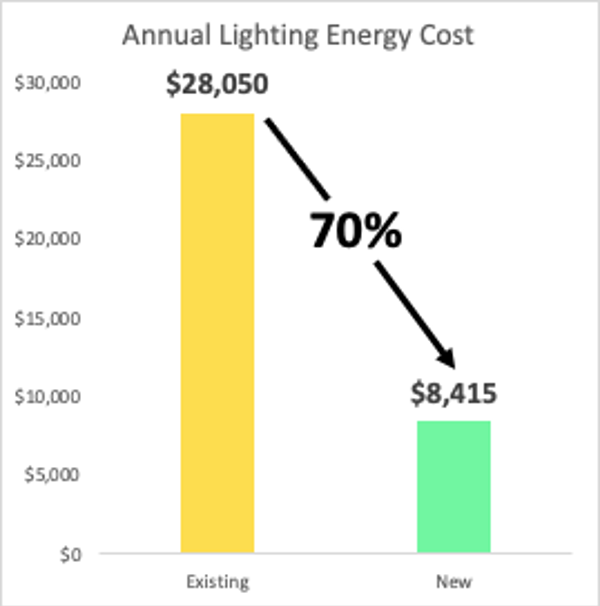Today is Earth Day 2022. And, you might ask what you can do to make a difference. We’d like to suggest you redirect that question toward your building.
Buildings’ role in Conservation
The U.S, has about 8.6 million commercial buildings - 88% of which are under 50,000 square feet - with an average age of 53 years old, consuming about 20% of all energy and 70% in urban areas, and wasting about 30% of that (about $90 billion in savings potential). While new buildings have much better sustainable designs, the majority of existing buildings are wasting energy, as they have not leveraged advanced technologies that have developed since they were built. And, affordable retrofit opportunities are easy to implement in order to make a big difference.
While renewable energy sources - solar, wind, geothermal - are certainly worth pursuing, conservation is the logical starting point with existing buildings to reduce carbon footprint and utility costs with the lowest-cost investment for the return. And, energy efficiency (EE) is the key to reducing building demand…and demand charges. Many Technologies have emerged since these buildings were constructed, especially in heating, cooling, and lighting, which combined represent more than half of a typical building’s energy consumption. Key solutions for impact include:
Utility Data Analysis, Energy Assessments, Benchmarking, and other approaches help bring the facts forward and inform building owners and other stakeholders to understand how their building is performing currently and where to focus reduction efforts on the highest priority upgrades with the greatest value, payback, and impact.
LED Lighting upgrades are often the most impactful energy-saving upgrade action taken in existing buildings, typically reducing lighting energy consumption by 70%, with simple energy payback in under 3 years, plus ongoing year-over-year savings, maintenance savings, improved environmental lighting quality, and enhanced building value.
Efficient HVAC and Smart Building Automation System (BAS) Controls offer significant energy conservation impact as well, often achieving 20-30% energy and cost savings, with an array of capabilities, and delivering added value in operations and remote management. Controls can provide advanced scheduling, sensing and optimized delivery, outdoor air optimization, coordination across multiple HVAC systems serving a space, and more.
Not only is this “minification” of energy critical for climate goals, it has a significant value proposition for building owners and operators, as well as occupants.
Beyond the simple energy consumption savings, energy efficiency efforts can reduce the peak demand charges which can be 50% or more of utility bills.
And with combined energy efficiency efforts helping to reduce energy consumption by 20-50%, that lowered building demand can then be met with smaller sized renewable energy generation, working toward net zero goals and energy independence.
What’s Your Incentive?
Whether you’re driven by climate change and global sustainability or you’re seeking to improve the operational and financial performance of your building, you’re in luck. Significant incentives are available to help in your energy efficiency upgrades. And, the state of Minnesota is rich with energy-efficiency incentives, including subsidized assessment programs, grants, rebates, all of which can be combined to reduce the net cost of your energy efficient building enhancements, speeding simple payback timing. And, for many projects, you can use low-interest (0% and 1%) financing where you pay only with the equivalent of your utility savings; so, it’s a $0 out-of-pocket, cashflow-neutral way to make your building better. That’s a “no brainer” as more than one of our clients have said.
In addition to Earth Day today April 22, 2022, there’s Energy Efficiency Day October 5, 2022. Though, we like to think every day can be Earth Day and Energy Efficiency Day for your building. Let’s explore how your building is performing and the role is can play saving you money and saving the planet.
Want Your Building to do its Part?
We’re happy to help you review your current building energy consumption and assess where it can make the greatest impact for your budget, your occupants, and our planet.




